Editor's Note:
With this article, we're very happy to introduce our thousands of readers to a new NYIP Roving Correspondent, Frank Beacham. Frank is a journalist based in New York City who has been working with us on a project that we can't describe just yet, but his writing and interests were such that we thought he would make a great addition to our team. There's a lot going on at the Institute right now, and when Frank told us he was planning on attending the Luminance Conference held in lower Manhattan in mid-September, we asked if he could provide our readers with a report. Here's what he filed.
Depending on who you ask, photography may or may not be in trouble. More pictures are being made than ever before, so the medium remains vastly popular. However, the traditional business of photography is on a slippery slope. Professional photographers, those who make pictures for a living, say that good paying clients are fading away.
This tough economic environment is across the board. Jobs and payments for work in magazines, newspapers and other editorial outlets have receded in recent years. Freelance work, from weddings to portraits, pays less today for many who attempt to do the work. Many photographers think they can no longer make a living and are nervous about the future.
So what is the future of photography? Perhaps, the better question is what's the future for all media? Does it pay to learn photography? How will freelance photographers make a good living in this stark new world economy? The answer is caught up in a swirl of change, both in technology and the economy.
A New York City-based company that creates websites for media people, Photoshelter, sponsored the recent Luminance Conference (Sept. 12 & 13) in New York City. It brought together for two days top performers from the worlds of still photography, video, multimedia and publishing to closely examine the future of the media business.
Gathered for the Conference were Pulitzer Prize-winning photographers, veteran documentary makers, web and social media luminaries, iPhone "app" developers and even an astronaut, Donald Pettit, who has taken some of the most spectacular recent images from outer space.
If the message of the conference could be summed up in a single word, it would be "story." Does the individual behind the camera have a story to tell and is the finished work compelling to a wide audience? The ability to tell a story, and that alone, was the most important facet of whether one can make a living in the newly reforming world of media production.
For those who are good storytellers with their cameras and have a strong work output, the future is bright. But for most everyone else, the free ride is over. It was a fact put bluntly by speaker after speaker.
A secondary point is that media is morphing into new forms. Still photography is merging with video, as is writing with computer graphics, design and music. All these types of formerly separate disciplines are combining into something new and still undefined. It's no longer adequate to understand only one part of it. If you do not have an understanding of each kind of media, you must combine forces with others who do.
"There used to be a lot of gatekeepers — others who would decide what we wanted to consume and what we would pay money for. All that has changed," said Eileen Gittins, CEO of Blurb, a publisher of digital and print books.
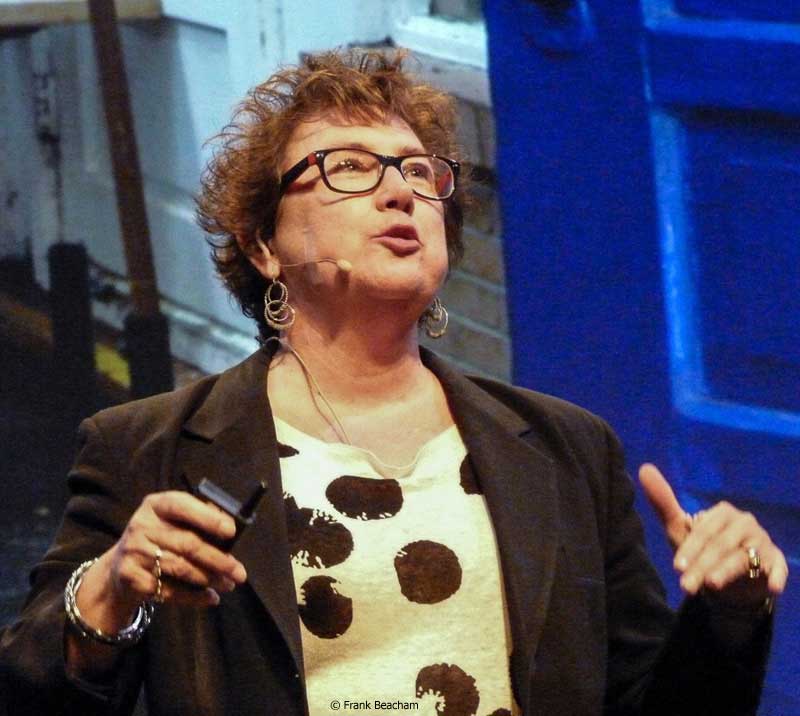
"Now we are seeing the democratization of media across every media type — whether it's magazines, books, videos, comics, music, etc. It's a world where you can do anything. It's up to you. That's both the good and the bad news — because now it's your call. What are you going to do as a response?"
Like most of the participants at the conference, Gittins focused on the remarkable amount of change occurring on a lightning fast basis. Though her company began doing print-on-demand books a few years ago, now she is working with enhanced tools for a new generation of multimedia.
"What's happening now is the convergence of moving media into a different kind of an experience. Right now it's also known as a book. Tomorrow, however, it may be known as some other medium," Gittins said. "First we had radio and then television. Now we have books moving into the digital world on iPads. Within a year, I think, we will have a new medium that we don't even call a book. It will be an amalgam of text, image, voice, video, animation, CV and music."
Individuals, rather than organizations, are the new media makers. Social media is the driver of the work to paying customers. The individual must not only have a clear and powerful story to tell, but he or she must learn how to effectively market it through the Internet and social media.
One segment of the conference focused on using easy-to-master consumer applications and their associated social networks for Apple's iPhone. Instagram, Hipstamatic and other companies hyped their nostalgic filtering photos and, yes, a few professionals have experimented with them.
But the over-the-top rhetoric surrounding these consumer approaches split the conference and contributed to considerable debate among attendees.
Avi Muchnick, CEO and co-founder of Aviary, didn't realize how much he polarized the audience when he declared that his company would "democratize creativity." He said his company is putting out a basic image editing application for the iPhone that's "so simple any grandmother can understand it.
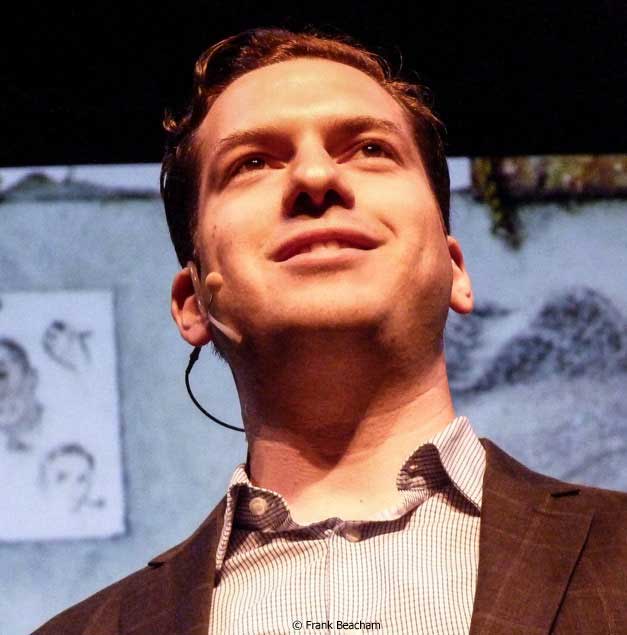
"We are basically enabling everyone to be creative. We've stripped out the basic functionality of Photoshop. That has really enabled creativity to take off," he said.
Veterans cringed at Muchnick's speech, with many claiming he had no clue what creativity is. He had confused ease of use with enabling creativity, and missed the point of what's important in good media making.
When asked about Instagram and the nostalgic filters being used on iPhones, Barbara Davidson, a Pulitzer Prize winning photographer for the Los Angeles Times, had a sharp answer.
"You can change the look of a photo with many kinds of filters and people are having tons of fun with that. But you can never create a moment. A moment is a moment. It happens or it doesn't. No matter what kind of filters people use or what kind of tricks you have in your bag, the true documentary photographer is the one that captures moments. For that moment you have to wait, you have to watch and you have to have a sensibility. You walk along side the people you are documenting.
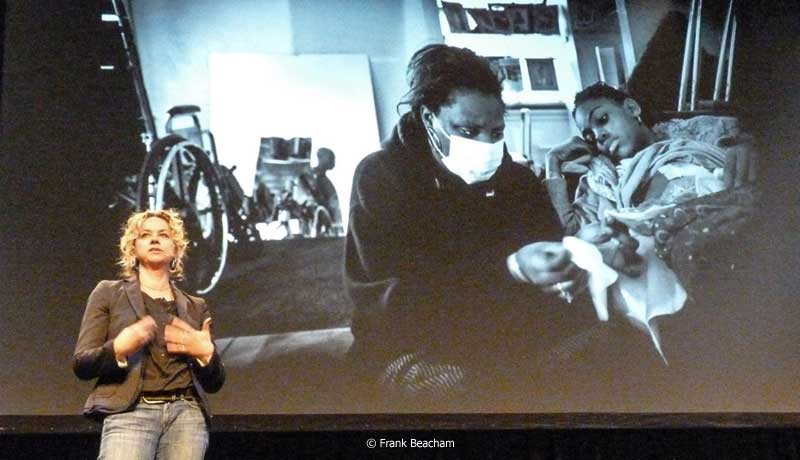
"If I don't feel how they are feeling, I don't know when to take that picture. You want to retain a dignity of your subject. It not about just taking a picture of somebody in time...that's ridiculous. That's nothing...just exploiting people. No matter what kind of filter you have, you can't convey moments and emotion. And that's where we come in, the real photographers."
The same ethic of truth extends to effective social media. Zack Arias, an Atlanta-based photographer who is active on Twitter and Tumblr, said those just trying to build numbers on social media with commercial "noise" are looking at it the wrong way.
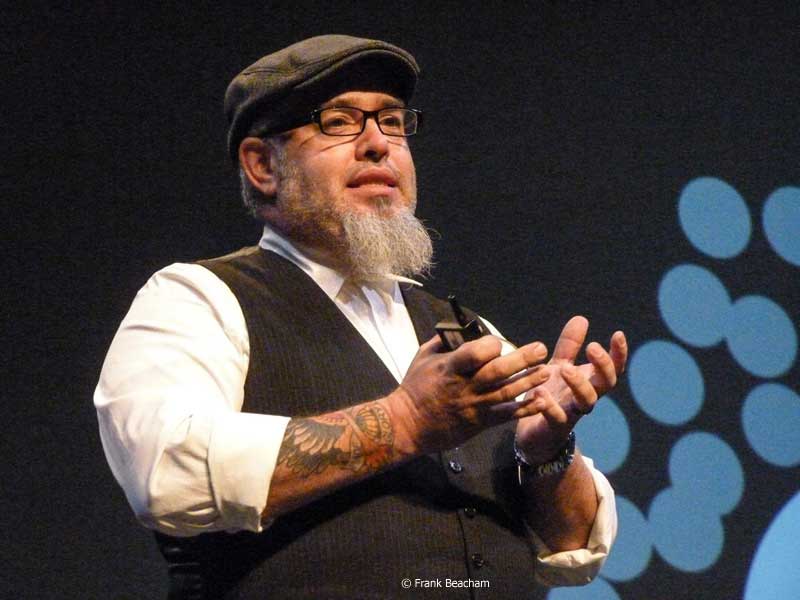
"You are a seedling and you feed social media with a story. That story is not about my clients or the camera gear that I own. It's not the light I can make with a Softbox. Ten years ago I would have told you different. I was projecting a 10-foot tall image of myself. I was embellishing my story. But now I tell the truth. I don't buy expensive gear I can't pay for, and I don't lie about anything on social media. I want to help people and they appreciate that."
Arias measured social media success in terms of signal-to-noise. The more "signal" you put in the more successful you will be, he said. Signal means honest information that will help people in their daily lives. Noise, he said, is commercial clutter designed to sell something. "It never works," he said.
Jen Bekman, CEO and founder of 20x200, is a New York City art dealer specializing in helping a new generation of photographers sell their work at moderate prices for aspiring collectors.
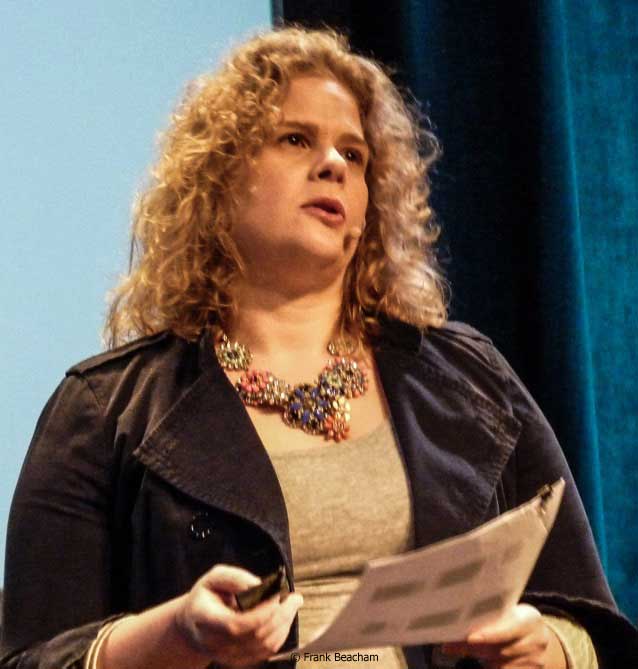
When asked the kind of people she seeks to represent, she went back to the core of the conference. Can they tell a story with their media?
"We look for people who are telling a story and expressing a point-of-view," Bekman said. "These are people pursuing a narrative or a concept and doing it with a kind of rigor and discipline that we feel is well thought out."
Generally, the mood of the conference was positive and upbeat, with the participants fully understanding the game has changed for those working with media. For the adventurous who have been blocked by gatekeepers in the past, this was good news and a chance to try again in a new, unblocked environment.
For those less adventurous, the conference signaled what most already knew. The comfortable jobs and large salaries with the gatekeepers of media are quickly being eliminated. Work with large organizations is coming to end. Small start-ups with few resources are the future.
It no longer matters whether one works with film, digital or whatever format, being different and having something to say is what matters. It's all about storytelling in a unique way.
In the trade for the money and perks of earlier times, today's media maker has a new freedom to explore the stories he or she desires. The future is for individuals who embrace that new ethic. It will be up to them to find an audience and promote themselves. The rest, sadly, will fall by the wayside.






